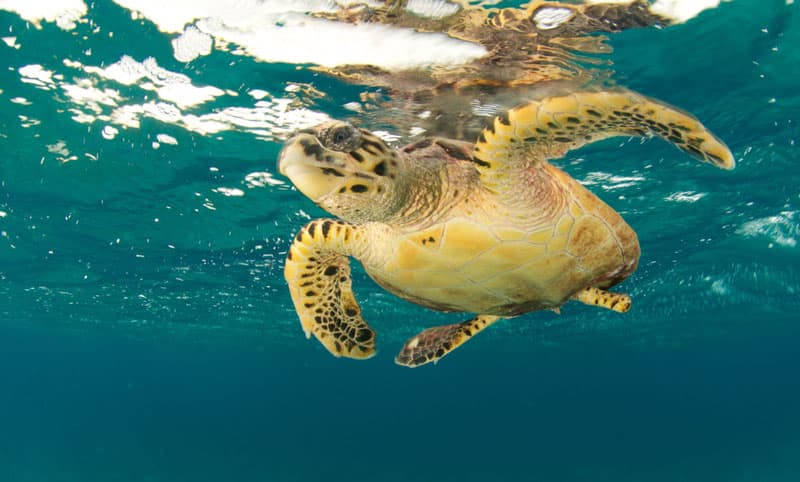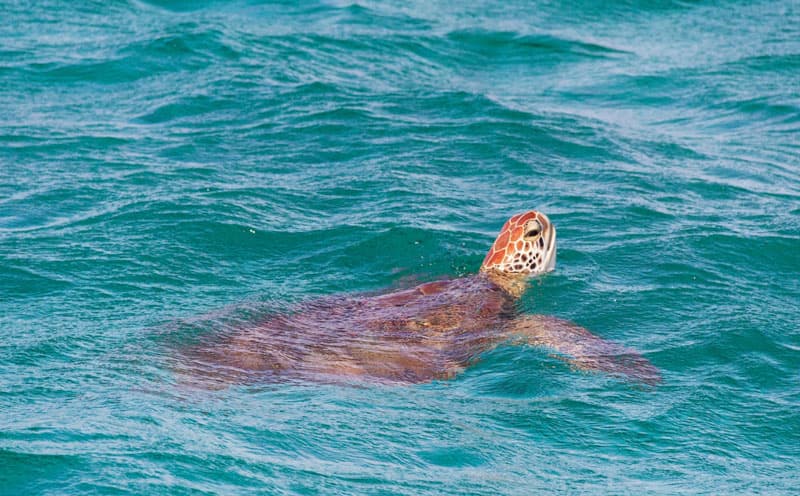How Long Can Turtles Hold Their Breath?
Turtles are fascinating creatures renowned for their impressive ability to hold their breath. Whether they reside on land or in the water, each species has evolved unique adaptations that allow them to manage their oxygen intake efficiently. In this article, we will explore how turtles manage their breath, the breath-holding capacities across different species, and the key factors that affect their breath-holding duration. Read on!

How Do Turtles Manage Oxygen Intake?
Understanding how turtles manage their oxygen intake is crucial to appreciating their breath-holding capabilities. Turtles have a unique respiratory system designed to conserve oxygen and withstand extended periods without air.
Lung Capacity: Turtles possess large lungs relative to their body size, enabling them to store ample oxygen. This is particularly important for aquatic turtles.
Slow Metabolism: They have a slow metabolism, which reduces their overall oxygen demand. This allows them to remain submerged for extended periods without needing frequent breaths.
Efficient Oxygen Use: Turtles are adept at using oxygen efficiently. Their muscles can function anaerobically (without oxygen) for limited time, which aids them during extended dives.
Blood Storage: Some turtle species can store oxygen in their blood and muscles, providing additional reserves during prolonged underwater stays.
Adaptations for Brumation: During colder months, turtles enter a state similar to hibernation, known as brumation. Their metabolic rate slows significantly, further reducing oxygen needs.
Buoyancy Control: Aquatic turtles can control their buoyancy to rest on the bottom of water bodies, decreasing the need for frequent surfacing.
In essence, a combination of physiological adaptations allows turtles to manage their oxygen intake efficiently.
Breath-Holding Capacities Across Turtle Species
Different turtle species have varying breath-holding capacities based on their habits and habitat. It’s fascinating to see these differences and understand how each species has adapted to its environment.

Aquatic Turtles and Sea Turtles
Aquatic turtles, including sea turtles, primarily live in the water and have developed remarkable breath-holding abilities.
Sea Turtles: Sea turtles are known for their long migrations and deep dives. Depending on the species and activity level, sea turtles can hold their breath for up to 4-7 hours while resting. When active, they usually surface for air every 30 minutes.
Freshwater Turtles: These turtles typically inhabit ponds, rivers, and lakes. They can hold their breath for approximately 20-40 minutes when active. During hibernation or while resting underwater, their breath-holding capacity increases significantly.
Softshell Turtles: Known for their unique, flat shells, softshell turtles have the ability to breathe through their skin to a certain extent. This adaptation allows them to remain submerged for prolonged periods.
Terrestrial Turtles and Land Tortoises
Land tortoises and terrestrial turtles have different respiratory needs compared to their aquatic counterparts.
Land Tortoises: Primarily land-dwelling, land tortoises require regular access to air. However, they still have some adaptations for limited breath-holding during short dips or burrowing activities. They can typically hold their breath for 15-30 minutes.
Box Turtles: Often found in moist forest environments, box turtles can also spend time in water. They can hold their breath for up to 15-30 minutes during swimming or submerged activities.
These turtles have less water-based adaptations compared to aquatic and sea turtles. Consequently, their breath-holding durations are shorter and they commonly need regular access to air.
Factors Influencing Breath-Holding Duration
Several factors can influence how long a turtle can hold its breath. Understanding these can provide insights into their behavior and survival strategies.
Species: Different species have varying physiological capabilities and adaptations suited to their habitats, affecting their breath-holding capacities.
Activity Level: Turtles that are resting or in a state of low activity can hold their breath for longer compared to when they are active and moving around.
Temperature: Colder water temperatures can slow down a turtle’s metabolism, extending the time they can stay underwater. During brumation, this effect is even more pronounced.
Age: Younger turtles generally have a less developed respiratory system compared to adults, potentially impacting their breath-holding durations.
Health: A turtle in good health will generally have better breath-holding capacities compared to one that is sick or stressed.
Oxygen Levels in Water: Higher oxygen levels in the water can allow turtles to extract more oxygen through their cloacal respiration, extending their submersion time.
Size and Weight: Larger turtles with bigger body masses and more developed lungs may hold their breath longer than smaller ones.
Overall, these factors interplay to determine the breath-holding durations of different turtle species under various conditions.
Conclusion
In conclusion, turtles exhibit a range of breath-holding capabilities influenced by their species, habitat, activity level, and various environmental factors. Aquatic turtles, including sea turtles, generally possess more significant adaptations for prolonged breath-holding. In contrast, terrestrial turtles and land tortoises show shorter durations. Understanding these fascinating adaptations highlights the incredible ways turtles have evolved to thrive in their respective environments.
FAQ
How long can freshwater turtles hold their breath?
Freshwater turtles can hold their breath for approximately 20-40 minutes during regular activity. When they are resting or hibernating, this duration can extend significantly.
How long can baby turtles hold their breath?
Baby turtles typically have shorter breath-holding capacities compared to adults. They can hold their breath for about 15-30 minutes depending on their species and activity level.
How long can a turtle hold its breath while sleeping?
While sleeping, turtles can significantly slow their metabolism, allowing them to hold their breath for extended periods. Sea turtles, for instance, can hold their breath for up to 4-7 hours during sleep.
